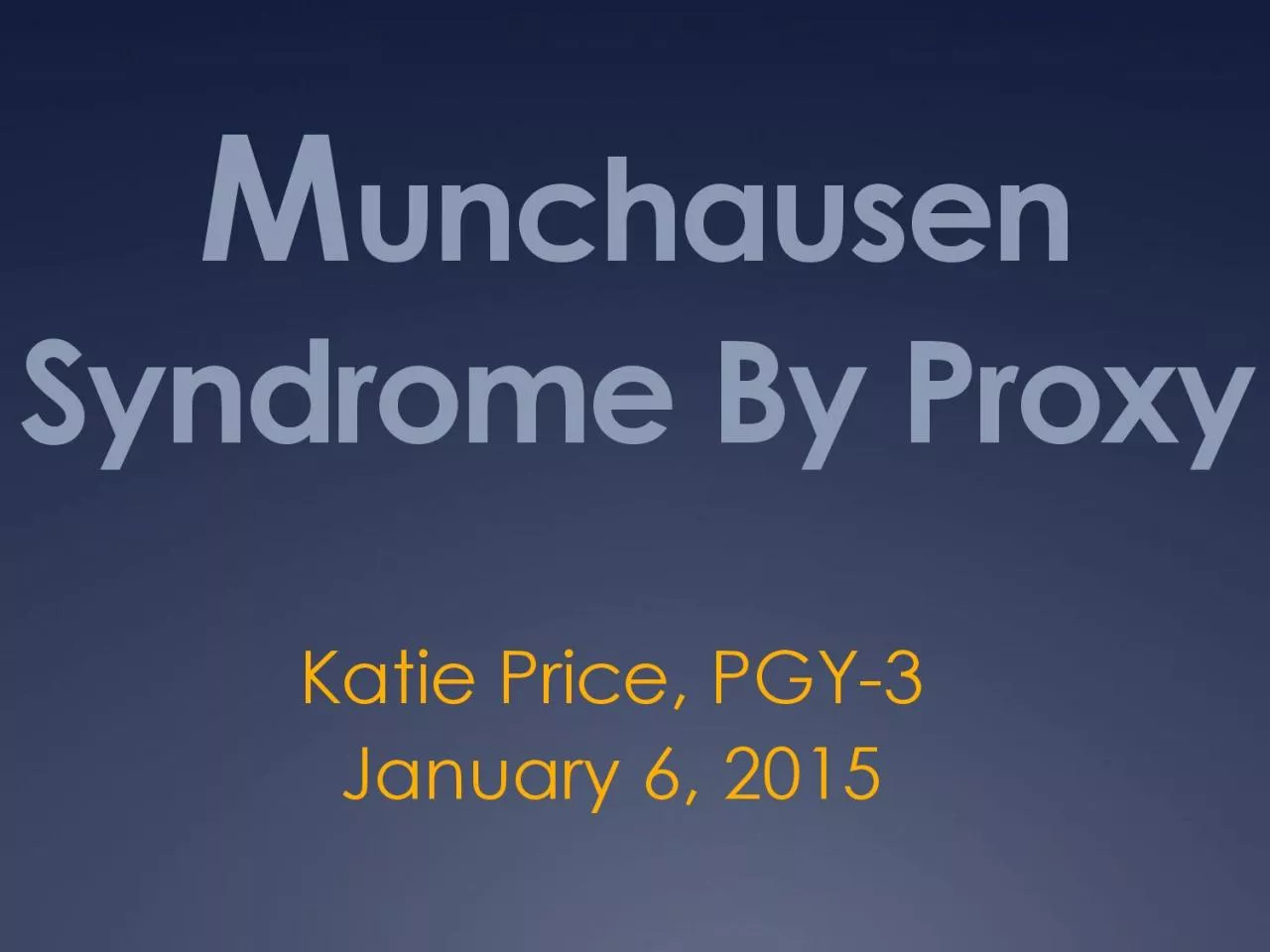PDF-unchausen
Author : reese | Published Date : 2022-10-28
M Syndrome By Proxy Katie Price PGY 3 January 6 2015 Prep Question A 10 month old has been hospitalized for the third time for persistent vomiting and weight
Presentation Embed Code
Download Presentation
Download Presentation The PPT/PDF document "unchausen" is the property of its rightful owner. Permission is granted to download and print the materials on this website for personal, non-commercial use only, and to display it on your personal computer provided you do not modify the materials and that you retain all copyright notices contained in the materials. By downloading content from our website, you accept the terms of this agreement.
unchausen: Transcript
M Syndrome By Proxy Katie Price PGY 3 January 6 2015 Prep Question A 10 month old has been hospitalized for the third time for persistent vomiting and weight loss His length and head ci.
Download Document
Here is the link to download the presentation.
"unchausen"The content belongs to its owner. You may download and print it for personal use, without modification, and keep all copyright notices. By downloading, you agree to these terms.
Related Documents

